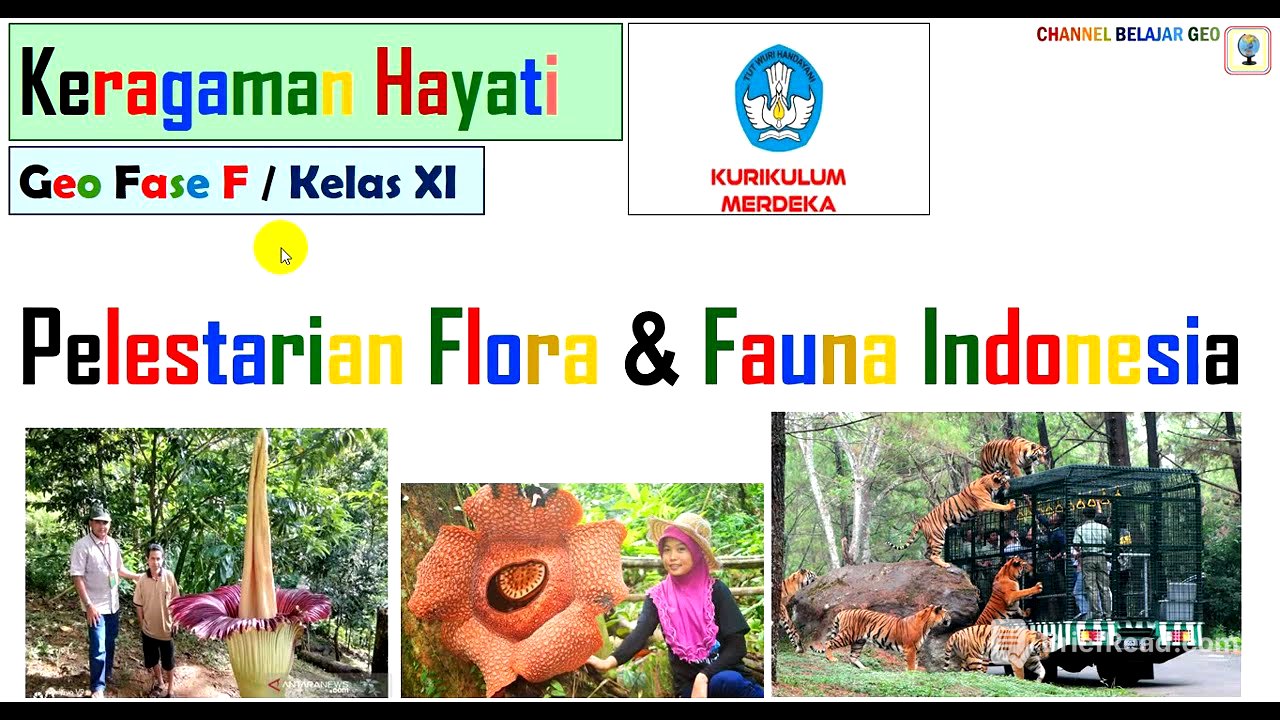TLDR;
This video discusses the importance of conserving flora and fauna in Indonesia, highlighting the threats they face due to development and the necessity of conservation efforts. It explains two main methods of conservation: insitu (within the natural habitat) and exsitu (outside the natural habitat), providing examples of each, including cagar alam, suaka margasatwa, taman nasional, hutan lindung, taman hutan rakyat (Tahura), Taman Safari, Kebun Botani, and kebun binatang.
- Conservation is crucial for maintaining ecosystem balance and protecting biodiversity.
- Insitu conservation involves protecting species within their natural habitats.
- Exsitu conservation involves protecting species outside their natural habitats.
Introduction to Flora and Fauna Conservation [0:00]
The video introduces the topic of flora and fauna conservation in Indonesia, emphasizing its importance due to the significant benefits these resources provide across various sectors such as economy, health, social, cultural, ecological, and energy. It notes that rapid development poses a threat to flora and fauna, making conservation efforts essential to prevent extinction. The discussion is based on the definition of conservation according to Law Number 5 of 1990, which focuses on the sustainable preservation of natural resources to maintain ecosystem balance.
Insitu Conservation Methods [1:14]
Insitu conservation involves preserving flora and fauna within their natural habitats. This method includes several types of protected areas. Cagar alam (nature reserves) protect specific plants and their habitats, along with the associated fauna and ecosystems. Examples include Cagar Alam Gunung Leuser, which protects daun payung and Rafflesia, Cagar Alam Nusakambangan, known for Wijaya Kusuma and Bunga Bangkai, Cagar Alam Bukit Kelam, protecting meranti bengaris and tengkuang trees, and Cagar Alam Loren, preserving swamp forests and subalpine vegetation. Suaka margasatwa (wildlife reserves) protect unique or endangered fauna. Examples include Suaka Margasatwa Way Kambas for elephants, Ujung Kulon for Javan rhinoceros, Tanjung Puting for orangutans, Lore Lindu for anoa and babirusa, and Komodo Island for Komodo dragons. Taman Nasional (national parks) conserve natural ecosystems and are managed for research, education, and tourism. Examples include Taman Nasional Gunung Leuser, Taman Nasional Kerinci Seblat, Taman Nasional Bukit Barisan Selatan, Taman Nasional Ujung Kulon, Taman Nasional Komodo, and Taman Nasional Loren. Hutan lindung (protected forests) are designated by the government to protect ecosystems, flora, fauna, and the environment. Examples include Hutan Lindung Sungai Wain, Hutan Lindung Wehea, Hutan Lindung Alas Ketu, and Hutan Lindung Baning.
Exsitu Conservation Methods [6:12]
Exsitu conservation involves preserving flora and fauna outside their natural habitats, often due to habitat loss or degradation. This method includes several approaches. Taman Hutan Rakyat (Tahura) or grand forest parks, are conservation areas used to collect native flora and fauna for research and education. Examples include Tahura Bukit Barisan, Tahura Dr. Muhamad Hatta, Tahura Juanda, Tahura Ngargoyoso, Tahura Ngurah Rai, and Tahura Bukit Soeharto. Taman Safari (safari parks) create environments that mimic natural habitats for flora and fauna. Indonesia has three Taman Safari locations: Cisarua Bogor, Prigen, and Gianyar Bali. Kebun Botani (botanical gardens) focus on collecting, maintaining, and propagating various plant species for education, research, and recreation. Examples include Kebun Raya Bogor, Kebun Raya Cibodas, Kebun Raya Purwodadi, and Kebun Raya Bali. Kebun Binatang (zoos) involve maintaining animals in artificial environments for recreation, education, research, and conservation. Examples include Kebun Binatang Ragunan, Semarang Zoo, and Surabaya Zoo.
Conclusion [9:01]
The video concludes by encouraging viewers to explore project assignments for a deeper understanding of flora and fauna conservation in Indonesia. It expresses gratitude for the viewers' attention and apologizes for any shortcomings, reinforcing the importance of continued learning in geography.









